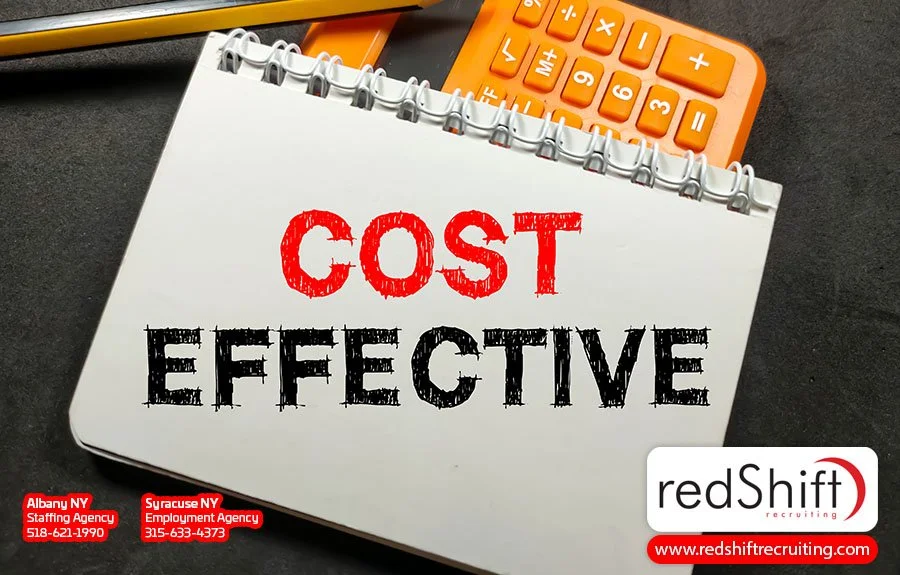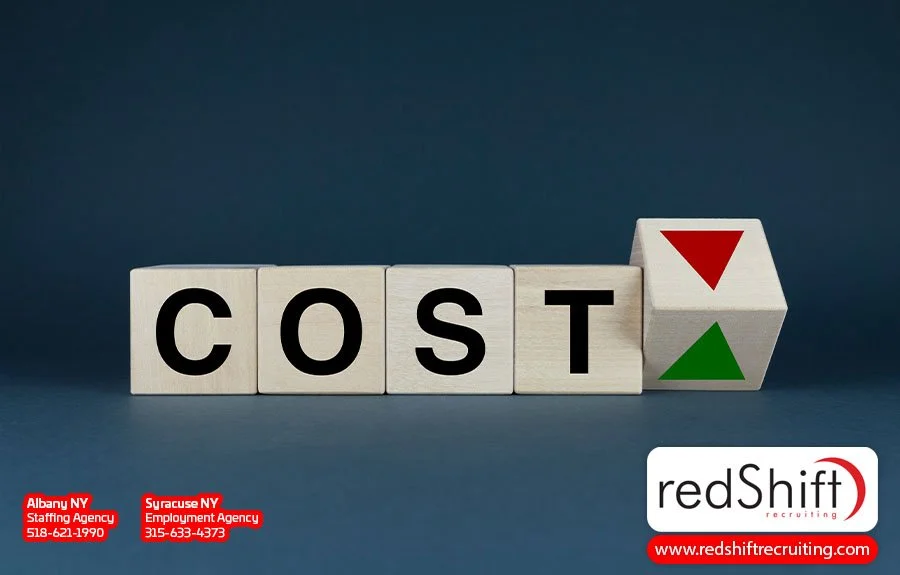
Achieving Cost-Efficiency in Developer Outsourcing: Proven Strategies
Companies are constantly looking for ways to cut costs and optimize their operations. One winning IT strategy that has gained traction in recent years is developer outsourcing, which involves contracting out software development tasks to third-party providers, often located in countries with lower labor costs.
But how can you ensure that this approach truly delivers cost efficiency without compromising the quality of your projects? We've probably all heard stories of outsourcing gone wrong: missed deadlines, poor communication, subpar work—not exactly a recipe for success. However, when done right, outsourcing can be an incredibly effective way to access specialized talent at a fraction of the cost of hiring full-time employees.
Through careful planning and the implementation of best practices, you can harness the power of outsourced developers while maintaining control over your project outcomes. In this article, we'll explore proven strategies that will help you strike the perfect balance between cost savings and flawless execution.
Define Your Goals and Objectives
Before starting any project, it's crucial to have a clear understanding of your goals and objectives. Achieving cost efficiency can mean different things for different organizations, so defining what cost-cutting measures are most important will help guide you in selecting the right strategies. Prioritizing saving money might involve choosing an offshore development team or opting for a more experienced provider who requires less oversight.
Whatever your specific needs may be, having well-defined goals and objectives is an essential step to ensuring that your developer outsourcing efforts yield maximum benefits. In determining these objectives, consider factors such as project timelines, desired skill sets, communication preferences, and any potential risks associated with outsourcing. Remember that achieving cost efficiency doesn't necessarily equate solely to reducing expenses; it also involves finding ways to optimize processes and ensure high-quality results while still keeping costs at manageable levels. By thoroughly evaluating these elements and aligning them with your overall business strategy, you'll be better equipped to make informed decisions.
Identify Your Resources
It's time to take control of your business' cost management and ensure that every penny is being spent wisely. By identifying your resources, you can effectively allocate them for maximum productivity and achieve significant cost savings. Start by considering resource allocation. To maximize cost efficiency when outsourcing development projects, you’ll need to carefully assess all available resources within budget constraints. This includes not only monetary operating costs but also human resources (your team of skilled professionals) and technical assets (e.g., software tools). Once you’ve considered all relevant factors, create an efficient project management plan that outlines clear expectations and deliverables from both parties involved in the collaboration process. With proper planning and communication, achieving desired results becomes much more attainable, leading to improved overall cost savings for your company without compromising quality or innovation.
Choose the Right Outsourcing Model
One of the key cost-efficiency strategies is to choose the right outsourcing model that suits your business needs. There are various models available, including the following:
Project-based outsourcing: An outsourcing company is hired for a specific project or set of projects.
Dedicated team outsourcing: An outsourcing company provides a team of developers who work exclusively on a client's project(s).
Staff augmentation outsourcing: An outsourcing company provides individual developers or teams to supplement a client's existing staff.
Time and materials outsourcing: The client pays the outsourcing company for the actual hours worked by the developers, as well as for materials and resources used.
Fixed-price outsourcing: The client pays a pre-agreed amount for a specific project with clearly defined deliverables and milestones.
Outcome-based outsourcing: The outsourcing company is paid based on the achievement of specific business outcomes or metrics.
The chosen model should align with your company's goals and objectives while providing a competitive advantage in terms of quality resources and streamlined processes. Additionally, this model should offer flexibility for scaling up or down as the project requires, ensuring that you're only paying for what you need.
It's essential to measure cost efficiency by comparing the expenses incurred against the value generated by an outsourced developer team. By selecting a suitable outsourcing model, businesses can reduce their overhead costs, such as office space, equipment, taxes, and employee benefits. This not only helps companies maintain control over their finances but also enables them to stay ahead of market competition through better resource management.
Assess Your Project Requirements
A thorough cost efficiency analysis at the beginning of any development process allows you to determine and allocate resources optimally, effectively outline your project budget, and ensure that you're able to manage costs throughout the entire project lifecycle. By having a clear understanding of not only what needs to be accomplished but also how it can be achieved most efficiently, you'll minimize costs while maximizing potential benefits.
It's important to remember that cost efficiency doesn't necessarily equate to simply cutting corners or choosing the cheapest option available; rather, it involves carefully considering each aspect of your business strategy and making informed decisions about where it’s best to invest your resources. Taking the time upfront to evaluate your project requirements will ultimately result in significant savings down the line as well-rounded solutions are implemented more seamlessly within your existing infrastructure. Investing in proper planning from the start will translate into long-term success for your development projects and overall business objectives.
Select the Appropriate Services
To ensure that you're getting the most value out of your investment, it's essential to choose a service provider whose pricing strategy aligns with your project requirements and budget constraints while offering cost-efficient solutions without compromising quality. When comparing potential partners, pay attention to both direct costs (such as hourly rates) and intangible benefits (like access to specialized expertise or innovative technologies). Doing so will help you optimize your spending on outsourced development projects.
Having a thorough understanding of your business needs and desired outcomes will enable you to select services that are not only cost-effective but also tailored specifically for your organization. This approach allows you to achieve maximum efficiency by investing only in those functions that contribute directly to your objectives. By being strategic about which services you engage, you can enjoy the benefits of developer outsourcing without breaking the bank.
Establish Your Budget
Cost efficiency refers to optimizing the allocation of resources while minimizing unnecessary costs, and creating a realistic budget that aligns with your organizational goals and business strategies is crucial. When setting up your budget, it's important to consider both the direct and indirect costs associated with hiring outsourced developers. In order to create a cost-effective plan, you should take into account various factors such as recruitment fees, salaries, training expenses, software licenses, taxes, office space (if needed), communication infrastructure, project management tools, and other overhead costs. Additionally, don't forget to include potential risks like unforeseen delays or changes in scope that might affect the final cost. By considering all possible costs and establishing a comprehensive yet flexible budget for developer outsourcing engagements, businesses can optimize their expenditures and achieve better results at lower costs.
Outline Your Payment Terms
It's no secret that clear communication is key when it comes to achieving success in any business endeavor. One significant aspect of outsourcing developers is outlining payment terms, which can significantly impact revenue if not handled properly. To avoid disputes and issues that could delay or impede product launches, establish well-defined payment terms before beginning the project. This will avoid misunderstandings or conflicts later on, enabling smoother collaboration between your company and the outsourcing provider. With transparent payment structures in place, both your organization and the outsourced developers can focus on delivering top-notch results.
Set Clear Performance Expectations
Having established your payment terms, it’s time to set clear performance expectations. This involves conducting a thorough cost-benefit analysis to determine whether outsourcing certain tasks or projects will yield the desired results and contribute positively to the revenue generated. In this stage of planning, consider both tangible benefits like increased productivity and intangible costs like potential communication barriers when working with remote teams. Weighing these factors helps you make informed decisions about which projects would be best suited for outsourcing, ultimately leading to maximum efficiency. Don't hesitate to compare different projects before making a final decision; after all, striking the right balance between quality work and cost savings is key to achieving success in cost-effective developer outsourcing.
Monitor Performance Metrics
After establishing performance expectations, you’ll need to monitor performance metrics closely throughout the project. By keeping an eye on these metrics, you can ensure that your outsourced developers are meeting their targets and delivering high-quality work. Regularly tracking various aspects such as project deadlines, code quality, productivity levels, and communication effectiveness allows you to identify problem areas early on and make necessary adjustments. This way, you'll be better equipped to maintain a healthy balance between the costs associated with outsourcing and the value derived from it.
To implement this strategy effectively, establish clear benchmarks for each metric at the beginning of your engagement with your developer outsourcing partner. Share these expectations with the outsourced team so they understand what's required of them. Encourage open lines of communication between all team members to discuss progress regularly and promptly address issues.
Establish Quality Assurance Procedures
Quality assurance procedures play a significant role in maintaining high standards and ensuring customer satisfaction. A robust quality assurance process guarantees that your outsourced team provides top-notch services while adhering to the agreed-upon timelines. To achieve cost-efficiency through developer outsourcing, establishing quality assurance procedures involves setting clear expectations with your external developers regarding deliverables, deadlines, and communication requirements. Implement proven strategies like regular peer code reviews, automated testing tools, and periodic project audits to verify adherence to these established processes. By doing so, you can maintain a fine balance between delivering high-quality services on time and keeping costs under control.
Plan for Scalability
Planning for scalability involves anticipating business growth and preparing your outsourced development team to adapt accordingly. By doing so, you can maintain a competitive edge in the market. When planning for scalability, it's crucial to assess both the technical and managerial aspects of your project, ensuring that your outsourced developers possess the necessary skills and expertise required to scale up efficiently. As your organization grows, achieving cost-efficiency through developer outsourcing becomes even more critical, as it allows you to allocate resources effectively and focus on core competencies without compromising quality or productivity levels.
Implementing this plan for scalability ensures that you have a flexible workforce capable of handling changes in demand or shifting priorities with ease, all while maintaining cost control measures throughout each phase of expansion. This approach not only helps secure long-term success but also fosters innovation within the company by allowing teams to explore new technologies and processes aligned with evolving market trends.
Make Use of Automation
As your outsourced development team works on scaling up the project, it's essential not to overlook the benefits of incorporating automation into this process. Utilizing automation as a part of your developer outsourcing strategy can further enhance cost efficiency and streamline operations, ensuring that you get the most value for every dollar spent. By leveraging automation tools and technologies, you can reduce manual labor, minimize errors, and accelerate the processes involved in delivering projects. Additionally, automating repetitive tasks such as testing, deployment, or even communication updates between teams will free up resources to focus on more critical aspects of the project while still maintaining high-quality output. This approach allows you to optimize both time and money without sacrificing quality or performance.
Utilize Data-Driven Decisions
By utilizing data from various sources, such as past projects, industry benchmarks, and even employee performance metrics, businesses can make more informed choices regarding their outsourcing strategies. This approach allows for a higher degree of precision when selecting the right developers to work on specific tasks, ultimately leading to better overall results and potential savings. Incorporating data-driven decision-making into your developer outsourcing process not only enhances cost efficiency but also helps mitigate risks.
Comparing different vendors based on objective criteria like project completion rates or customer satisfaction scores will ensure that you're partnering with reliable businesses capable of consistently delivering quality work. Moreover, by leveraging historical data about individual developers' performance levels, companies can identify which professionals possess the skills needed for particular projects, thus reducing unnecessary expenditure while optimizing output quality at the same time.
Communicate Effectively and Regularly
To achieve cost efficiency through effective communication in developer outsourcing, establish clear channels for dialogue at the beginning of the project. This includes setting up regular meetings or check-ins using video conferencing tools like Zoom or Google Meet and employing collaboration platforms such as Slack or Microsoft Teams to facilitate real-time conversations between team members. By maintaining open lines of communication and encouraging active engagement among stakeholders, you can address potential issues before they escalate into costly problems while simultaneously fostering an environment conducive to innovation and growth.
Frequently Asked Questions
How Do I Ensure the Protection of My Intellectual Property When Outsourcing Development Work?
When outsourcing development work, it's crucial to ensure the protection of your intellectual property (IP). To safeguard your IP, you should start by conducting thorough research on potential partners and their reputation for handling sensitive information. Next, make sure to have a comprehensive non-disclosure agreement (NDA) in place before sharing any project details with them. You can also consider implementing secure communication tools for discussing project specifics or exchanging files. Additionally, having clearly defined contracts that outline ownership rights and responsibilities will help minimize disputes over IP claims. And finally, always maintain proper documentation of all project-related materials throughout the development process as evidence in case any legal issues arise regarding your IP rights.
What Are Some Common Challenges of Managing Remote Outsourced Development Teams, and How Can They Be Overcome?
Some common challenges of managing a remote outsourced development team include communication barriers, time zone differences, cultural differences, a lack of direct oversight, and concerns regarding quality control. To overcome these obstacles, it's crucial to establish clear lines of communication using reliable tools and platforms; schedule regular meetings or video conferences that accommodate all participants' time zones; foster an understanding and appreciation for diverse cultures within the team; implement systems for monitoring progress and performance in real-time; and set up consistent feedback loops to ensure continuous improvement in both individual developers' skills and overall project outcomes. By proactively addressing these issues, you can enhance collaboration and productivity while maintaining high quality standards throughout your outsourced development process.
How Can I Effectively Onboard Outsourced Developers to Familiarize Them With My Company Culture and Project?
Effectively onboarding outsourced developers involves familiarizing them with your company culture and the project-specific knowledge required to seamlessly integrate with your team. Start by providing clear communication guidelines, setting expectations for collaboration, and offering resources that outline your organization's values and vision. Introduce them to relevant team members through video calls or in-person meetings when possible, and share any relevant documentation regarding the project's objectives, requirements, and timelines.
Continuous feedback and open dialogue are crucial during this process, and you should consider scheduling regular check-ins or progress updates to address questions or concerns promptly. By investing time in thorough onboarding, you can foster a strong working relationship between your in-house team and outsourced developers while maximizing their productivity and alignment with your goals.
How Do I Determine if Outsourcing Development Is More Cost-Effective for My Business Compared to Hiring In-House Developers?
There are several factors to consider when determining if outsourcing development is more cost-effective for your business compared to hiring in-house developers. These may include the scope and duration of your project, the expertise required, the availability of local talent, and the overall budget. Outsourcing can offer benefits such as access to a wider pool of skilled professionals, reduced overhead costs, and increased flexibility. However, it may also come with potential downsides like communication barriers or differing time zones. By carefully evaluating these aspects and comparing them against in-house hiring costs, such as salaries, taxes, benefits, and training expenses, you'll be better equipped to make an informed decision on which option best suits your company's needs and goals.
What Strategies Can Be Employed to Maintain a Strong Working Relationship With an Outsourced Development Team and Mitigate Potential Conflicts?
To maintain a strong working relationship with an outsourced development team and mitigate potential conflicts or misunderstandings, it's crucial to establish clear communication channels and set realistic expectations. This can be achieved by defining project goals, roles, responsibilities, timelines, and deadlines for deliverables. Additionally, fostering open dialogue through regular meetings or status updates can help address concerns in real-time and ensure that everyone is on the same page. Finally, creating a collaborative environment where both parties feel valued and respected can contribute to positive outcomes while also helping to build trust within the partnership.
Conclusion
Achieving cost-efficiency in developer outsourcing requires careful consideration and the implementation of proven strategies. By selecting the right outsourcing model, leveraging automation and tools, optimizing team composition and location, and effectively managing communication and project timelines, organizations can reduce costs while maintaining high-quality output. It's essential to conduct thorough research and due diligence when selecting an outsourcing partner and to establish clear metrics and success criteria to measure the effectiveness of the outsourcing efforts. Ultimately, by following these proven strategies and best practices, organizations can achieve cost efficiency in their developer outsourcing while maintaining a focus on long-term success and business goals.



